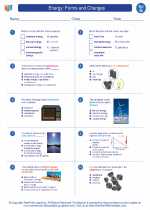Reflecting Telescopes
A reflecting telescope is a type of telescope that uses a combination of mirrors to gather and focus light to create an image. It was invented by Isaac Newton in the 17th century and is widely used in both amateur and professional astronomy.
How Reflecting Telescopes Work
Reflecting telescopes work by using a curved primary mirror to gather and focus light. The light is then reflected to a secondary mirror, which in turn reflects the light to the eyepiece or a camera. This design eliminates the chromatic aberration that is often present in refracting telescopes, making reflecting telescopes popular for astronomical observations.
Main Components of Reflecting Telescopes
1. Primary Mirror: This is the main mirror in a reflecting telescope and is usually parabolic or spherical in shape. It gathers and focuses the incoming light.
2. Secondary Mirror: This smaller mirror reflects the focused light to the eyepiece or camera. It is positioned in the light path at a 45-degree angle.
3. Mount: Reflecting telescopes are often mounted on an equatorial mount or an alt-azimuth mount to allow for easy tracking of celestial objects.
Advantages of Reflecting Telescopes
- They are free from chromatic aberration, which is a common issue in refracting telescopes.
- They are capable of larger apertures, allowing for better light-gathering ability and higher resolution.
- They are generally more compact and lighter than refracting telescopes of the same aperture.
Study Guide
Here are some key points to remember when studying reflecting telescopes:
- Explain the difference between a reflecting telescope and a refracting telescope.
- Describe how the primary and secondary mirrors work together to create an image in a reflecting telescope.
- Discuss the advantages of reflecting telescopes over refracting telescopes.
- Compare and contrast the different types of mounts used for reflecting telescopes.
- Explain how the size of the primary mirror affects the performance of a reflecting telescope.
Understanding reflecting telescopes is important for anyone interested in astronomy and observational science. By grasping the key concepts and mechanisms behind these telescopes, you can gain a deeper appreciation for the wonders of the universe.
.◂Science Worksheets and Study Guides Seventh Grade. Energy: Forms and Changes

 Worksheet/Answer key
Worksheet/Answer key
 Worksheet/Answer key
Worksheet/Answer key
 Vocabulary/Answer key
Vocabulary/Answer key
 Vocabulary/Answer key
Vocabulary/Answer key
 Vocabulary/Answer key
Vocabulary/Answer key
